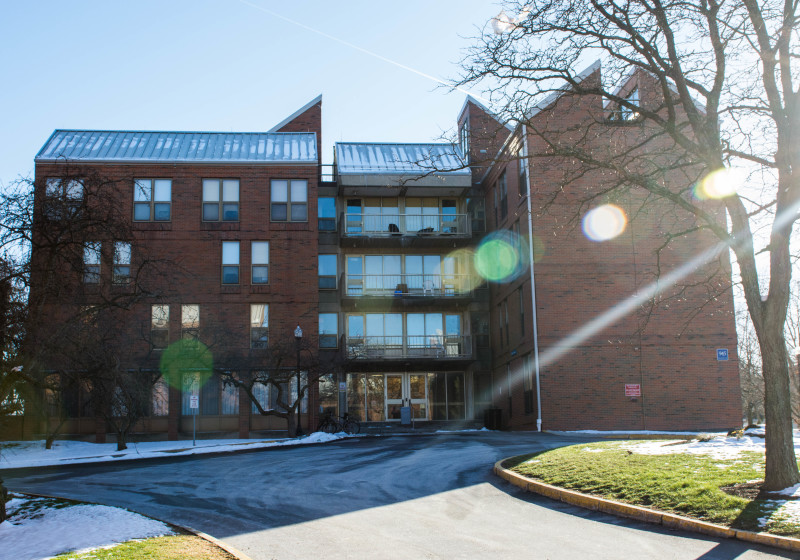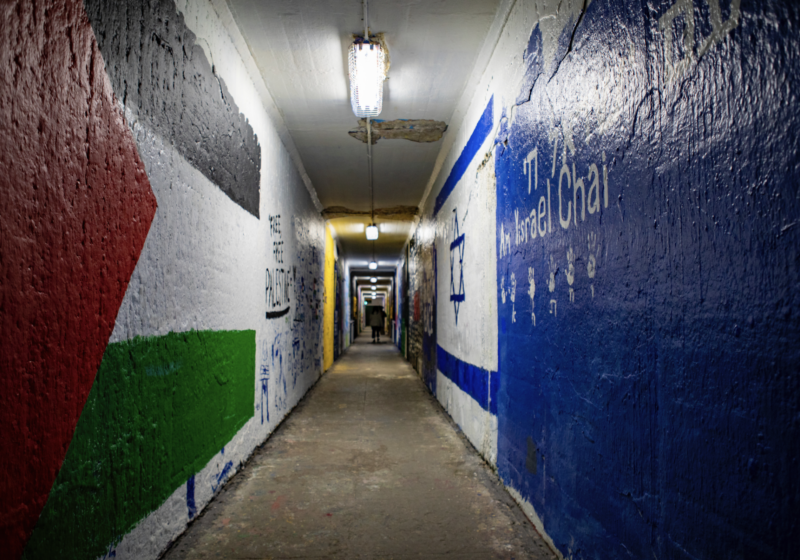Mice in Phase have disrupted students’ lives this school year, leaving them upset and frustrated with their living conditions.
“We pay so much money to go here and for housing,” said sophomore Brenna James, whose suite on the fourth floor of Munro has caught 14 mice so far. “I already have my own issues with school and trying to stay healthy for sports, this is just so much more.”
Four of the six buildings in Phase — Munro, Kendrick, Slater, and Gale — have been affected, according to Senior Sanitarian Peter Castronovo from the University’s Department of Environmental Health and Safety. Reports to the Campus Times by students stated that the mice have been spotted on multiple floors of those buildings.
Fifteen suites told the Campus Times that they have dealt with mice this school year, with live and dead ones found in suite rooms, bathrooms, lounges, an electrical outlet, and the electrical part of one student’s fridge.
Despite this, Castronovo said his department does not consider any of the buildings infested. He pins the apparent higher rates of mice this year to the extremity and changes of the weather, as well as the structures around the buildings.
“It’s now become a common issue, so I wish they followed up more with the people who reported mice or said something to us as a whole relating to the mice, about how they were working on it now or their future plans,” said sophomore Payton Nugent, who heard a mouse chewing on paper under her bed, has found droppings on her sock, and discovered one dead in the electrical part of a fridge in her Kendrick lounge. “Facilities really just brought me traps, which, if it was an individual case, could’ve been fine, but it’s a pattern now, so I do think something more should be done.”
Last semester, when several suites complained about bees in Phase, an email was sent out to all residents with Environmental Health and Safety’s contact information. As of Sunday, an email had not been sent out to residents about the multiple mice complaints throughout Phase.
A concern Castronovo brought up is that many students do not contact his department or Facilities when they see a mouse. Out of the students who shared their stories, a few had not called Facilities.
“Students may not know to call EH&S Pest Control Unit, although the RAs and Res Life staff as well as Facilities do,” Castronovo said. “Therefore, if they called them, it should get to us, but I do not know that for sure for every call. Another concern is sometimes we may set traps, but students do not call us to let us know the trap was snapped, and the mouse is thrown away and either the trap disposed of also or reset by the student. We need to know when a trap catches a mouse every time.”
But students who received traps from Facilities and Environmental Health and Safety claimed they function poorly, leading some to buy their own traps.
“Some of the traps did not work,” said sophomore Logan O’Connell, who has dealt with five mice in his suite on the first floor of Munro. “You could tell the mouse took the peanut butter off, but they never went off. We have tried to make sure that nothing is left out that they could get into, or something that would attract them to our lounge, but we’ve still had an issue.”
Students claimed to have heard mice in their ceilings and heaters. Many are concerned the mice may be carrying harmful diseases.
“They’re in my ceiling,” junior Joanna Stasik of the second floor of Munro said. “We woke up to them running back and forth. The tiles were moving up and down, and one of them almost fell on me. I [had to] cover my head with blankets. Two other people in my suite have them living in their oatmeal — they nibbled through their food bins. They’ve found mouse droppings in the food. Facilities doesn’t help at all. They put a mouse trap here and there. They don’t even tell everybody who’s living where the mouse traps are. I almost stepped on one.”
Residents living in James’ suite — the one that has caught 14 mice — have been in close contact with Facilities and Environmental Health and Safety since September, but had been experiencing problems as late as March 5. Even after Environmental Health and Safety filled holes in their room, they caught more mice.
James and her suitemates were also frustrated with Facilities’ failure to inform them about how many mice the department had caught on its own. It was not until the students told them they had caught a few mice that Facilities informed them a custodian had disposed of three more without their knowledge.
Recently, James woke up to find an adult mouse dead in a trap next to her. The stench was “horrible.” She called Facilities and asked them to remove it. The worker asked her if she could do it herself. When she refused, he said she would have to wait until tomorrow afternoon for them to come.
“We’ve paid for our own traps because we don’t think [the ones provided] are working, and we’ve caught most of them with ours,” James said. “I should never have to clean out my own trap — that’s disgusting, they have diseases. I know if this was happening to them, they would not put up with it. They’re just not treating us like we are people. It’s annoying and frustrating. I’ve been so patient, and I do feel taken advantage of [for] my age. I feel so offended.”
Castronovo plans to work with Resident Life, James’ suite, and other residents in Phase to minimize the problem and find ways to prevent it from happening.
“Students, Facilities, and EHS need to be a united team to keep pests under control,” Castronovo said.
As for residents, many want an acknowledgment and plan for the future of Phase.
“These things do happen,” said sophomore Bianca Hall, who found a dead mouse in her room on the third floor of Gale. “What I need to see from Resident Life is them sending an email to us addressing it, so we don’t feel like it’s them just ignoring us and letting this continue. People respond better to you acknowledging a natural problem that you cannot prevent. They need to make it known that they know.”





